Sound Association Normal Letter Sounds Worksheets for Ages 3-7
15 filtered results
-
From - To
Enhance your child's phonemic awareness with our "Sound Association Normal Letter Sounds Worksheets" designed for ages 3-7. These engaging and interactive worksheets focus on the essential connection between letters and their corresponding sounds, fostering early literacy skills. Tailored to young learners, each worksheet features colorful illustrations and easy-to-follow activities that make learning fun. As children practice sound association with letters, they build a strong foundation for reading and writing. Perfect for homeschooling or classroom use, our worksheets help ignite a love for learning and prepare kids for future academic success. Start your journey towards literacy today!
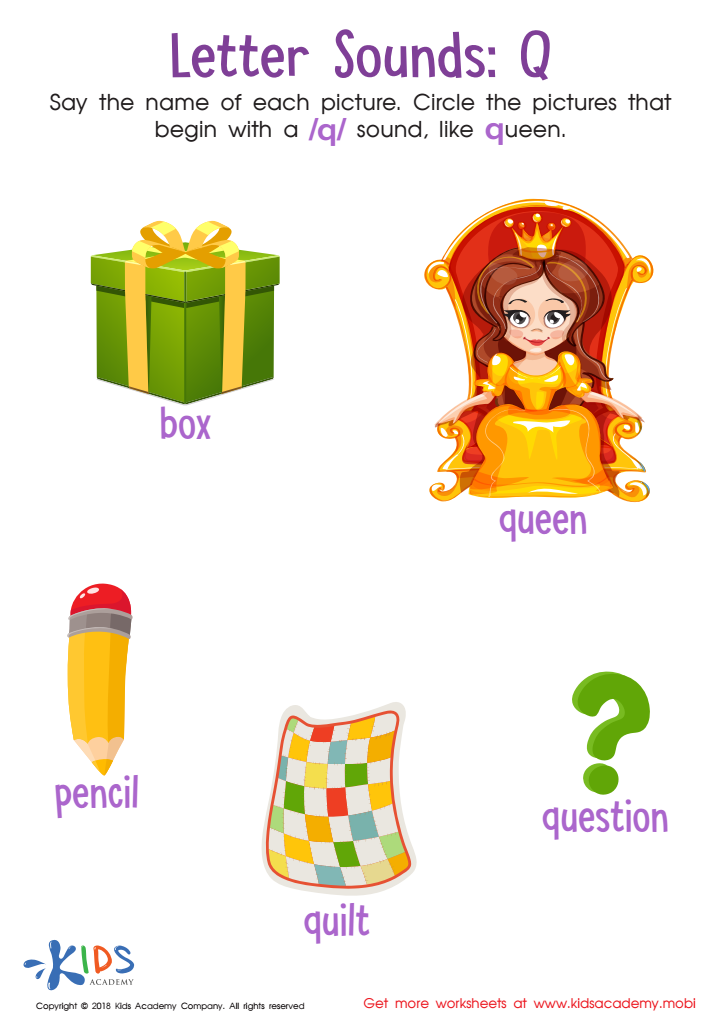

Letter Q Sounds Worksheet


Letter K Sounds Worksheet


Letter P Sound Worksheet
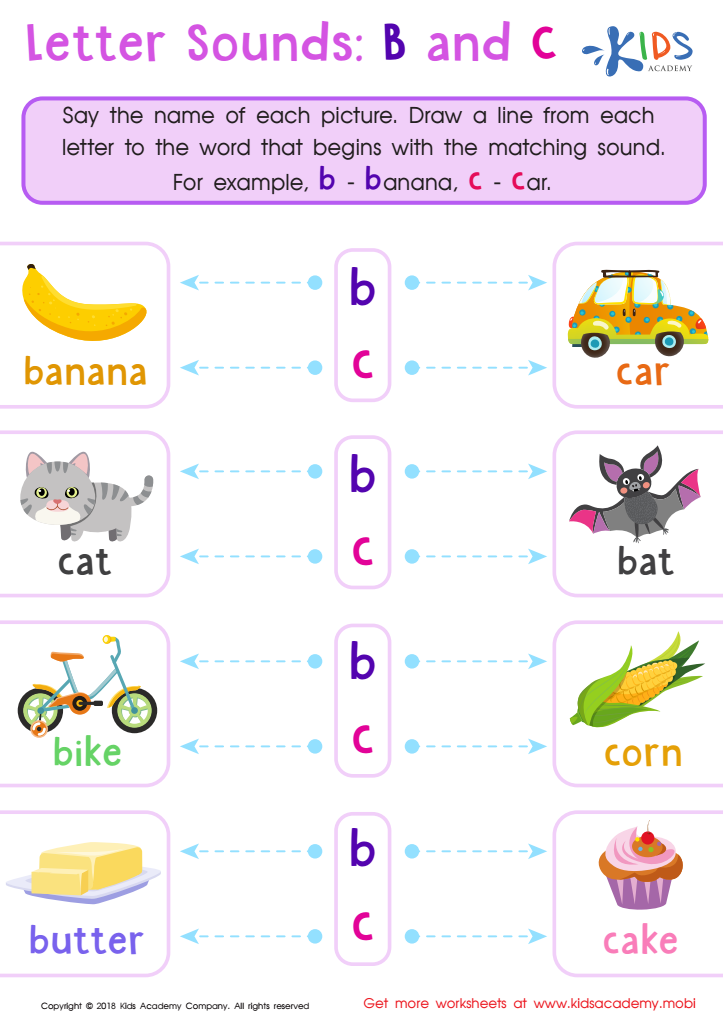

Letter B and C Sounds Worksheet
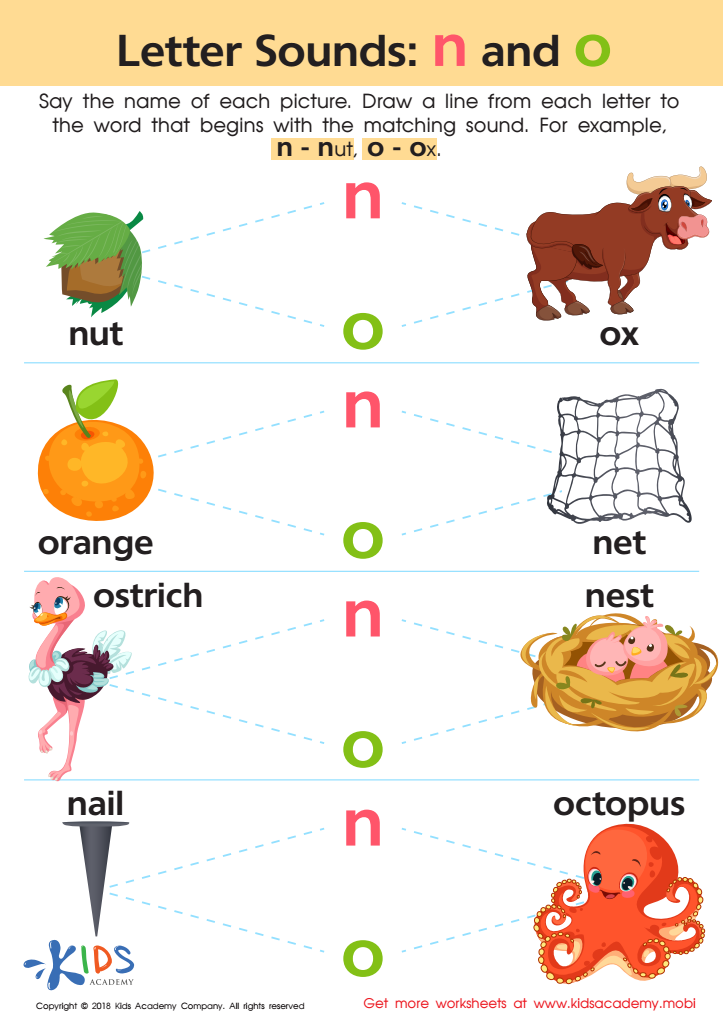

Letter N and O Sounds Worksheet
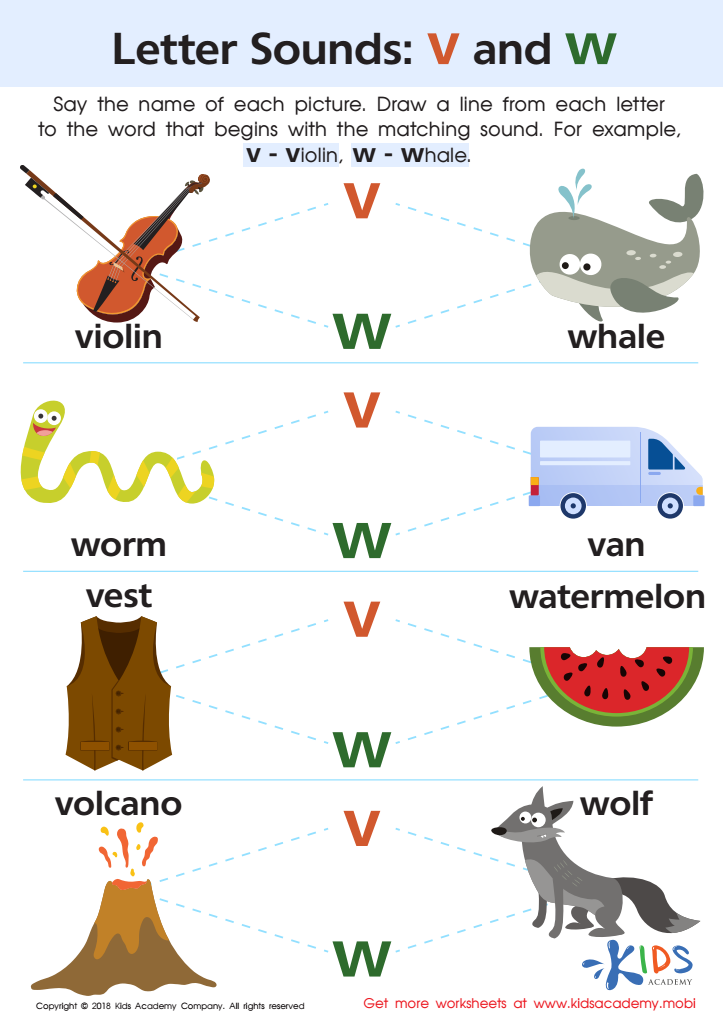

Letter V and W Sounds Worksheet
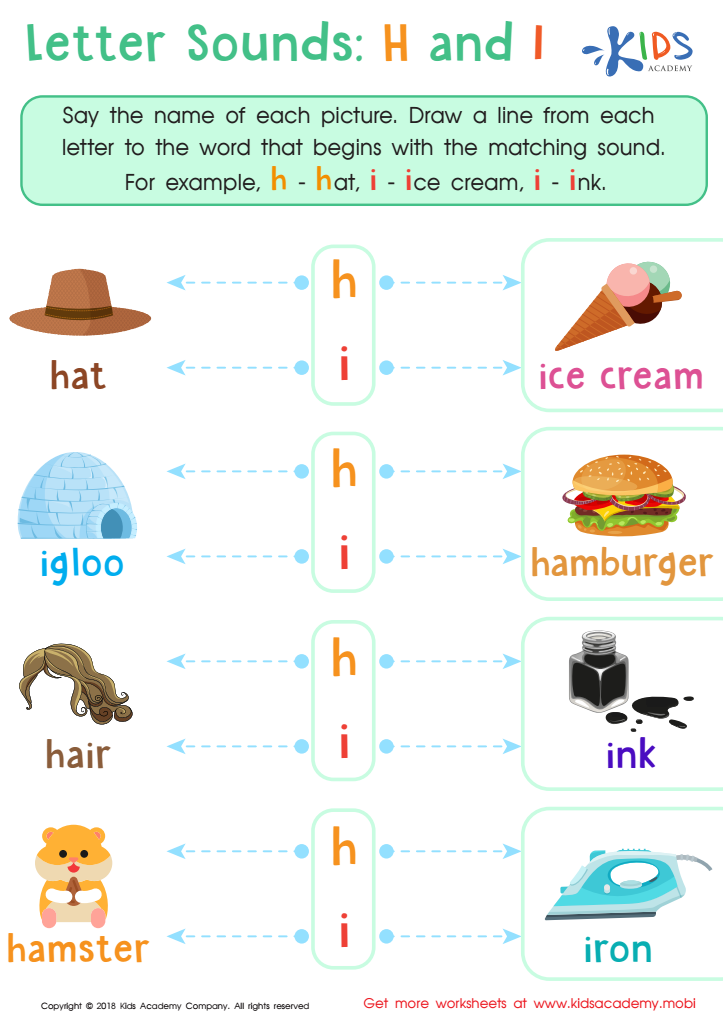

Letter H and I Sounds Worksheet
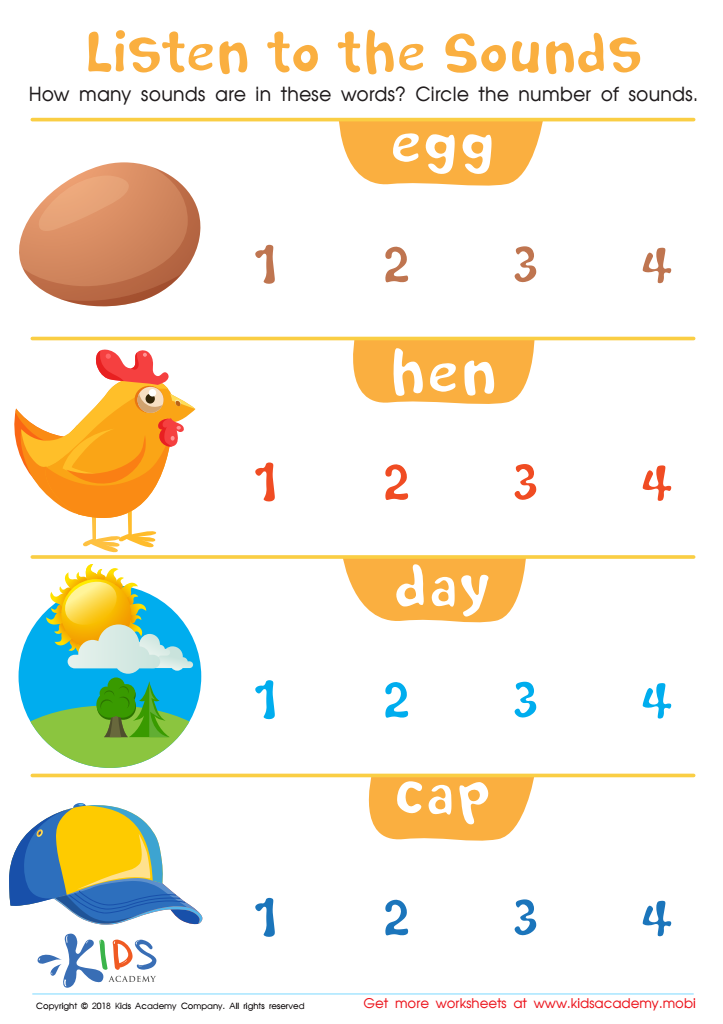

Listen to the Sounds Worksheet
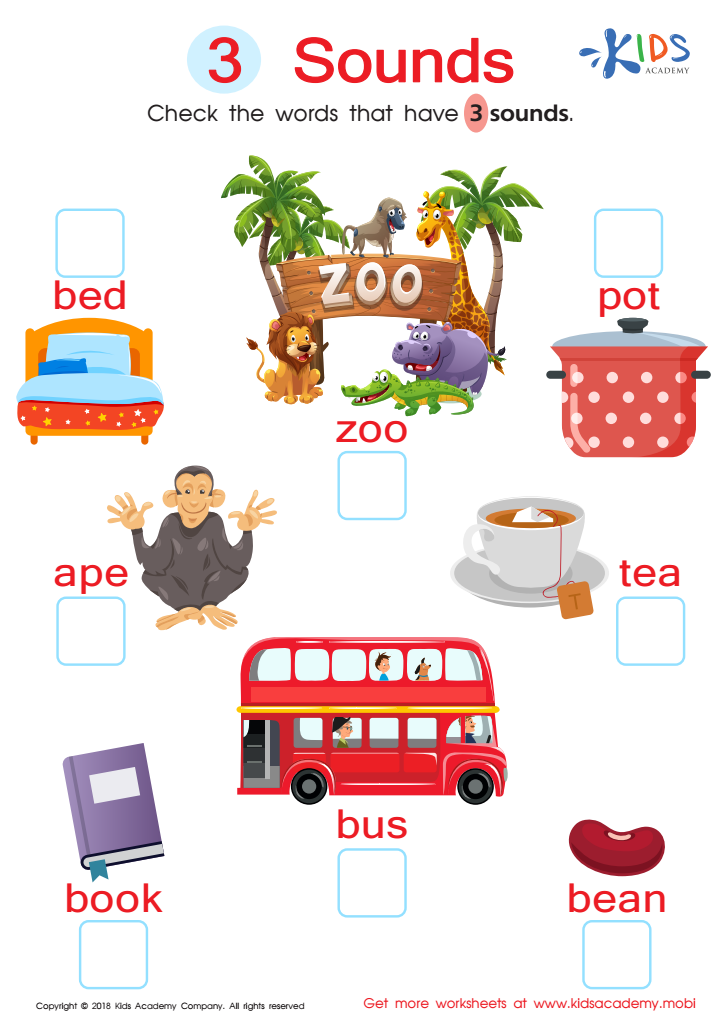

3 Sounds Worksheet
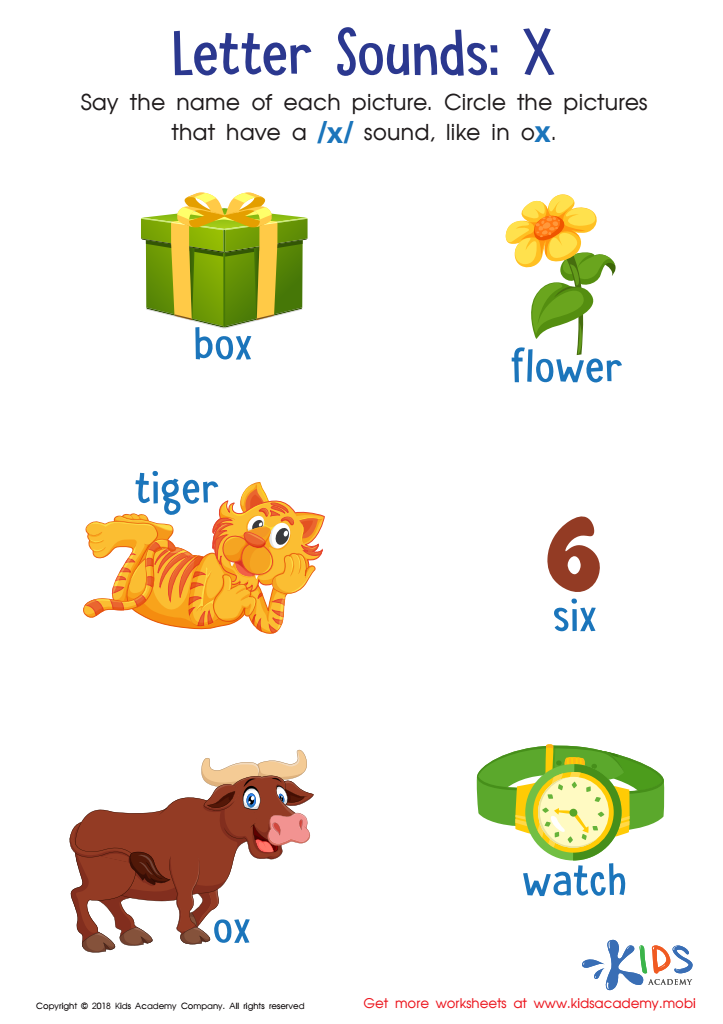

Letter X Sounds Worksheet
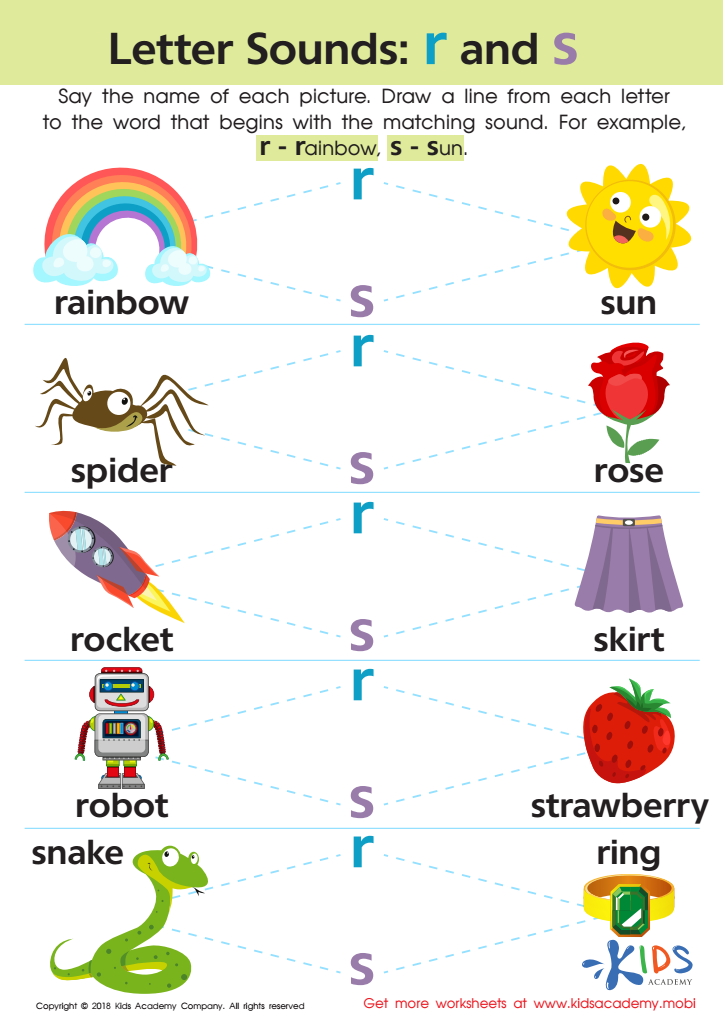

Letter R and S Sounds Worksheet
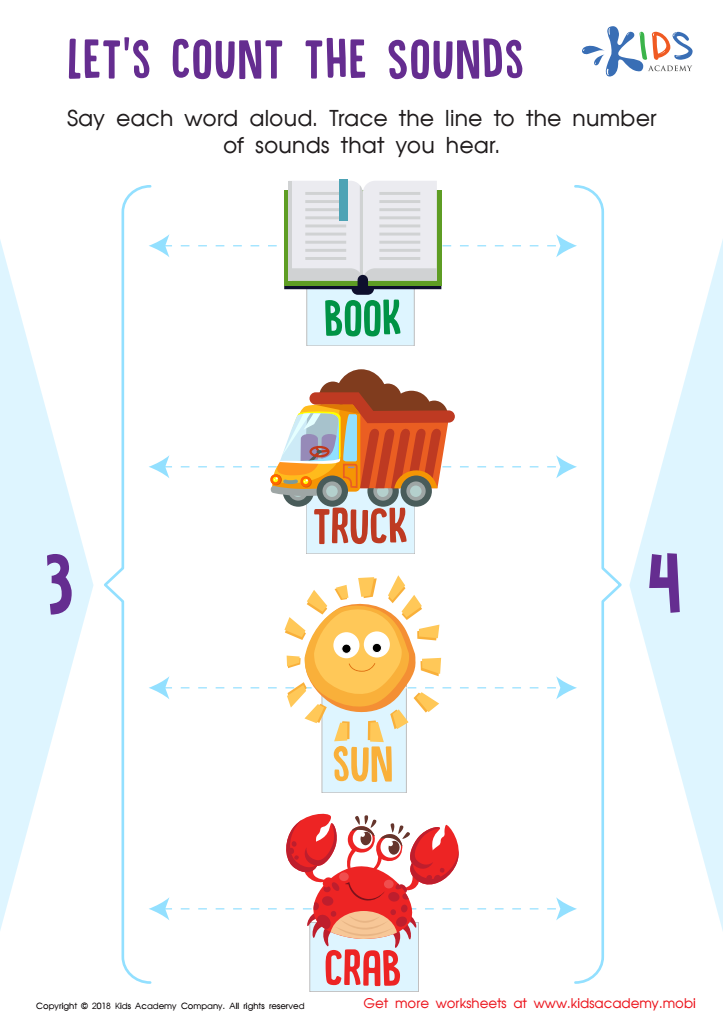

Let's Count the Sounds Worksheet


Letter l and M Sounds Worksheet
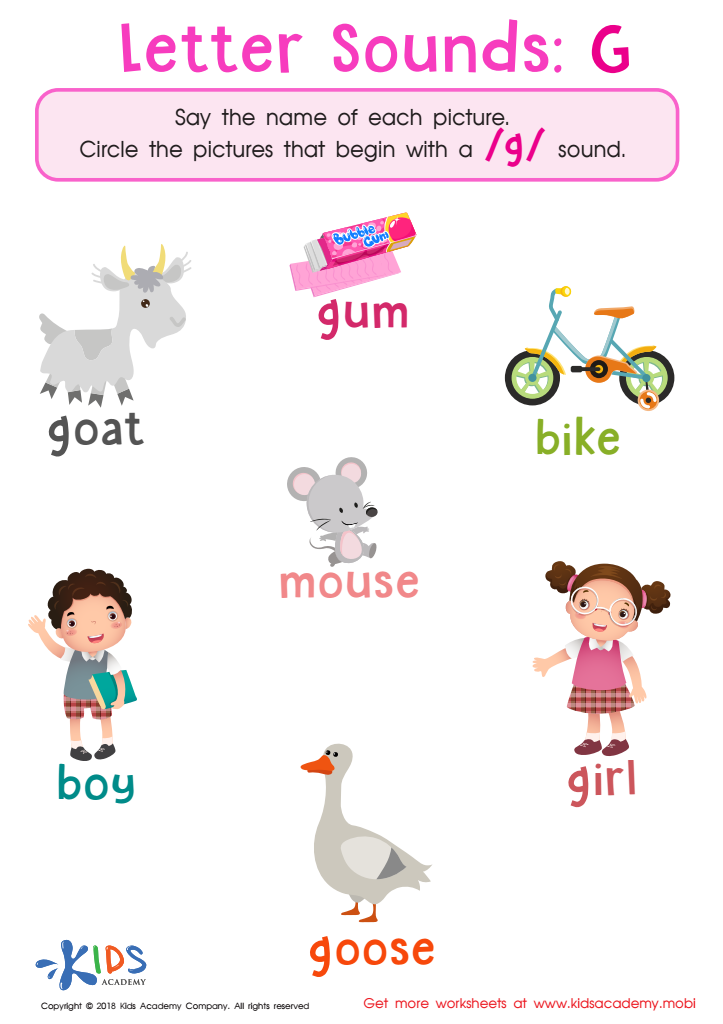

Letter G Sounds Worksheet
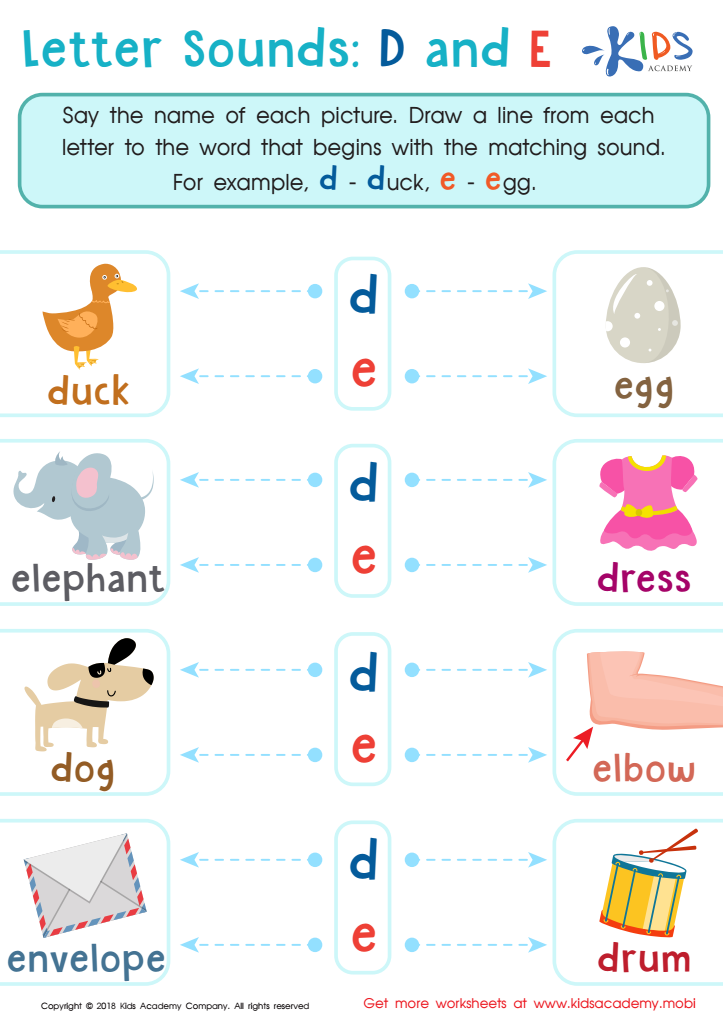

Letter D and E Sounds Worksheet
Understanding sound association and normal letter sounds is crucial for children aged 3-7, as this foundational skill significantly impacts their literacy development. At this age, children are tuned in to language, making it an ideal time to introduce them to the connection between letters and their corresponding sounds. Mastering these associations helps young learners decode words, enhancing their reading capabilities and overall cognitive growth.
When parents and teachers actively engage in teaching sound-letter correspondence, they lay the groundwork for future reading proficiency, vocabulary growth, and academic success. Children who grasp these concepts early on tend to develop stronger phonemic awareness, which is essential for reading and writing.
Moreover, sound association supports language development beyond just literacy. It aids in pronunciation and enables children to express themselves more clearly. By embedding this knowledge into daily activities—through songs, games, and storytelling—adults can create a dynamic learning environment that captivates children's curiosity.
Ultimately, fostering sound-letter associations not only equips children with essential literacy skills but also boosts their confidence in navigating language, making it imperative for parents and teachers to prioritize this aspect of early education.

 Assign to My Students
Assign to My Students














